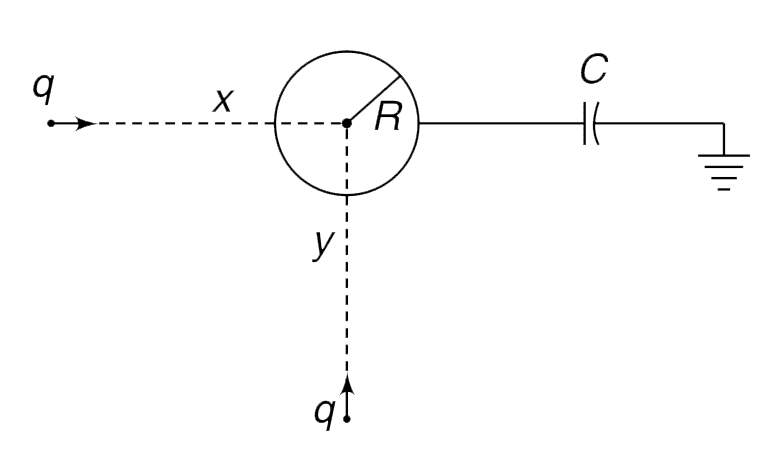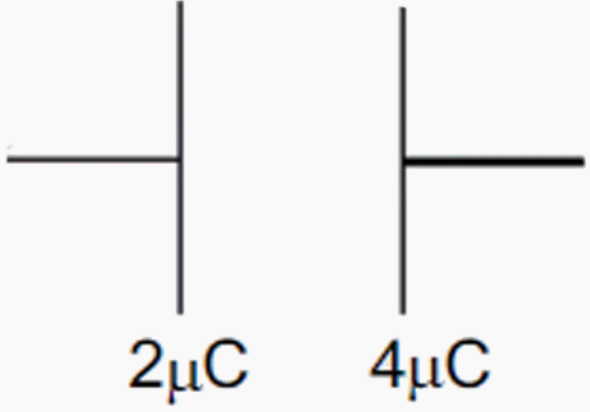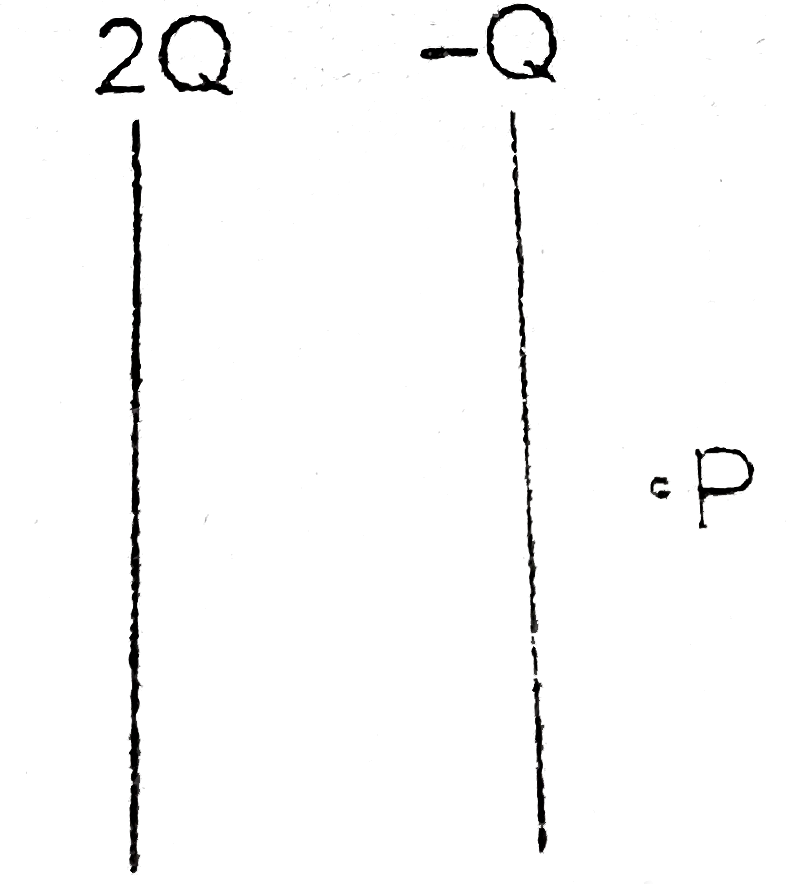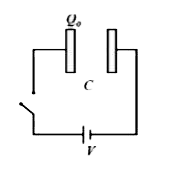A neutral conducting ball of radius R is connected to one plate of a capacitor (Capacitance = C), the other plate of which is grounded. The capacitor is at a large distance from the ball. Two point charges, q each, begin to approach the ball from infinite distance. The two point charges move in mutually perpendicular directions. Calculate the charge on the capacitor when the two point charges are at distance x and y form the centre of the sphere.

The correct Answer is:Q=qRC(4π∈0R+C)(1x+1y)
Step by step video, text & image solution for A neutral conducting ball of radius R is connected to one plate of a capacitor (Capacitance = C), the other plate of which is grounded. The capacitor is at a large distance from the ball. Two point charges, q each, begin to approach the ball from infinite distance. The two point charges move in mutually perpendicular directions. Calculate the charge on the capacitor when the two point charges are at distance x and y form the centre of the sphere. by Physics experts to help you in doubts & scoring excellent marks in Class 12 exams.
Updated on:21/07/2023Topper's Solved these Questions
Similar Questions
Knowledge Check
If the two plates of the charged capacitor are connected by a wire, then
Apotential will becomes infinteBcharge will becomes infiniteCcapacitor will get dischargedDcharge will becomes double that of earlier oneThe potentials of the two plates of capacitor are +10V and −10V. The charge on one of the plate is 40C. The capacitance of the capacitor is
A2FB4FC0.5FD0.25FTwo identical parallel plate capacitors are connected in one case in parallel and in the other in series. In each case the plates of one capacitors are brought closer by a distance a and the plates of the outer are moved apart by the same distance a. Then
Atotal capacitance of first system increasesBtotal capacitance of first system decreasesCtotal capacitance of second system decreasesDtotal capacitance of second system remains costant.
How will the voltage (V) between the two plates of a parallel plate capacitor depend on the distance (d) between the plates, if the charge on the capacitor remains the same?
View SolutionTwo infinite conduting plates 1 and 2 are separated by a distance l. A point chagre q is located between the plates at a distance x from plate 1. Find the charges induced on each plate.
View SolutionIn a parallel plate capacitor of capacitor 1μF two plates are given charges 2μC and 4μC the potential difference between the plates of the capacitor is

View SolutionIn the figure shown the plates of a parallel plate capacitor have unequal charges. Its capacitance is 'C' P is a point outside the capacitor and close to the plate of charge −Q. The distance between the plates is 'd'

View SolutionIn the circuit shown, left plate of the capacitor with capacitance C is given a charge Q0 and plates of capacitor are connected across the battery as shown. Amount of charge that will flow from battery to left plate of capacitor when key is closed is:

View Solution
